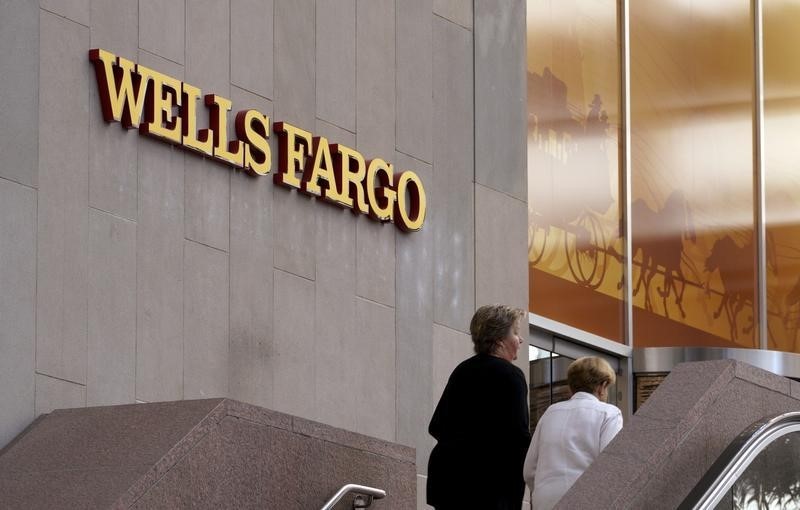As the economic landscape shifts, the resilience of consumer spending appears increasingly tied to the availability and cost of credit.
With pandemic-era savings largely depleted and a softening labor market casting doubts on future income growth, the role of credit is becoming ever more crucial, said analysts at Wells Fargo in a note dated Monday.
“The broad weakness in the July jobs report raised questions about whether the policy environment has remained too restrictive for too long, yet recent consumer spending numbers continue to come in stronger than expected,” the analysts said.
Real personal consumption expenditures (PCE) surged in the second quarter, growing at an annualized rate of 2.3% on the back of strong durable goods purchases and consistent services spending. Early indicators point to a strong start for the third quarter as well.
However, the slowing pace of hiring in July, coupled with other weakening labor market indicators, signals that income growth could be under pressure, potentially weighing on consumer spending in the near future.
Had the labor market cooled earlier, households might have been better prepared to weather job losses or slower income growth. Now, with savings exhausted, credit has taken on a more significant role in sustaining consumer spending.
Revolving consumer credit, especially credit card debt, has outpaced other forms of household debt in this economic cycle. However, the pace of borrowing has slowed dramatically in 2024, with outstanding revolving debt declining in two of the past three months.
This trend, set against rising delinquencies and higher credit costs, suggests that credit is becoming less accessible, although household belt-tightening may also be a contributing factor.
Total revolving credit is now more than 20% above pre-pandemic levels and has grown nearly eight times faster in this cycle than in the previous one, raising concerns about over-leveraging.
However, when adjusted for higher incomes, the rise in revolving credit appears less alarming. The credit-to-income ratio remains below pre-pandemic levels, though it is important to note that this ratio does not account for who holds the debt versus who earns the income.
This distinction is critical, especially considering the higher costs of servicing debt today. Past-due notices are on the rise, with over 9% of credit card borrowers falling 30 days behind on payments—the highest delinquency rate among major household debt categories.
While credit cards are the fastest-growing debt category, mortgage debt remains the largest, accounting for over 70% of all household debt. Households that refinanced during the pandemic have benefited from lower fixed rates, with the effective rate on all outstanding mortgage debt at just 3.9% in Q2, nearly 300 basis points below the average new 30-year conventional mortgage rate of 6.8%. These lower rates have kept mortgage delinquencies below pre-pandemic levels.
During the mid-2000s, many homeowners tapped into rising home values with home equity loans or lines of credit (HELOCs), contributing to the housing bubble and financial crisis.
Today, while the use of HELOCs has increased, home prices have generally outpaced the growth in these loans, keeping homeowners' equity near all-time highs. This equity provides a significant source of liquidity, allowing homeowners to sustain spending.
Although HELOCs are not as cheap as they were a few years ago, they remain more affordable than credit card debt, with rates typically just a few percentage points higher than the prevailing 30-year mortgage rate.
This makes HELOCs a more attractive option for larger expenditures, although they carry the risk of using homes as collateral.
Despite high credit costs, demand for credit card loans remained strong through Q2. However, as economic conditions deteriorate and delinquency rates rise, banks are becoming more cautious.
The Federal Reserve's latest loan officer survey reveals that banks are tightening consumer credit limits and increasing the minimum credit scores required for new credit card loans.
In contrast, banks are showing increased willingness to make consumer installment loans, particularly for major durable goods purchases like furniture or appliances.
While the latest data may seem unremarkable, with bank willingness to lend at 0.0%, this represents a significant improvement from the negative readings seen over the past year, signaling a cautious recovery in lending.
The current credit environment highlights a growing divide. Credit remains available and relatively affordable for loans secured against assets, particularly real estate.
However, this is cold comfort for the 34% of households that do not own a home. For low-income renters, the situation is particularly dire.
These households are more likely to carry revolving credit card balances, which have become increasingly expensive in the current high-rate environment.
The situation is exacerbated by the fact that lower-income households tend to spend a larger portion of their income on non-discretionary items like gas and groceries, where prices have risen faster than broader inflation.
This has contributed to the rising credit card delinquency rates among lower-income and younger borrowers.
While consumers have continued to spend despite rising interest rates, it would be a mistake to conclude that they have been unaffected. The increasing reliance on credit, particularly among lower-income households, underscores the precariousness of the current economic situation.
As access to credit becomes more restricted and expensive, the staying power of consumer spending may ultimately depend on how well households can navigate this challenging environment.
